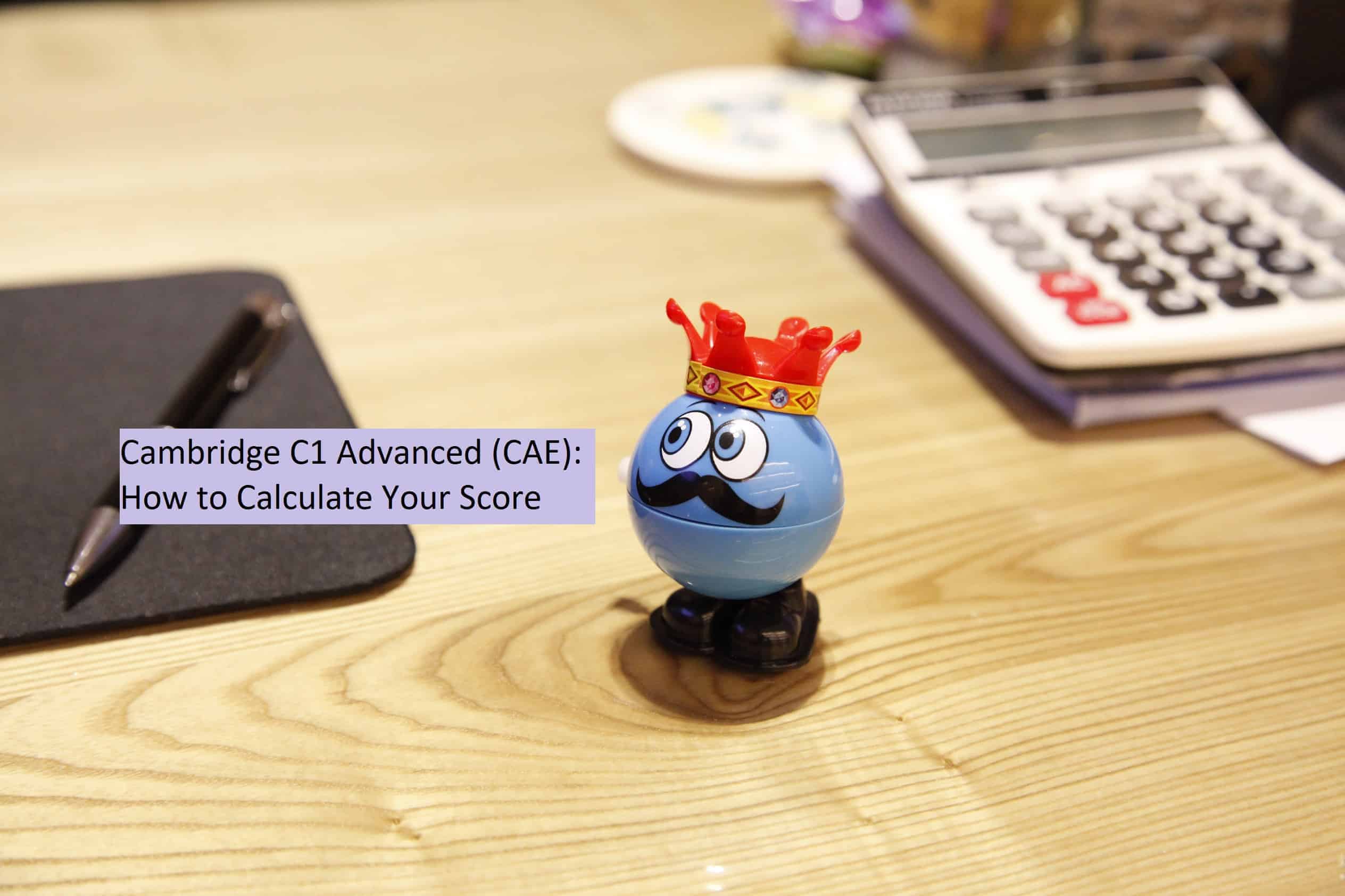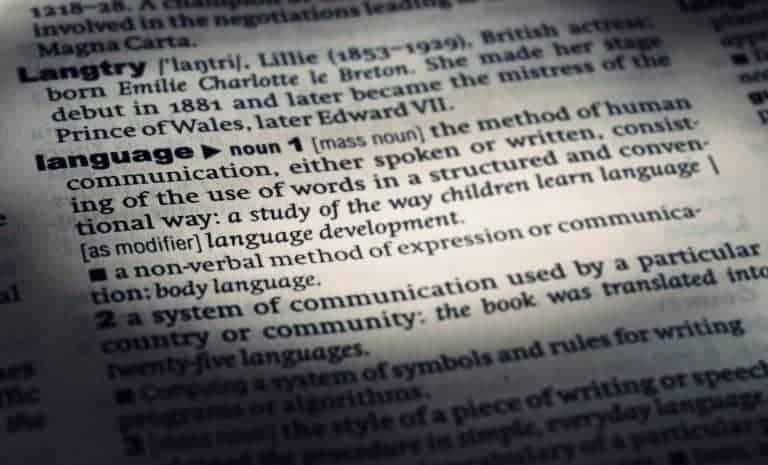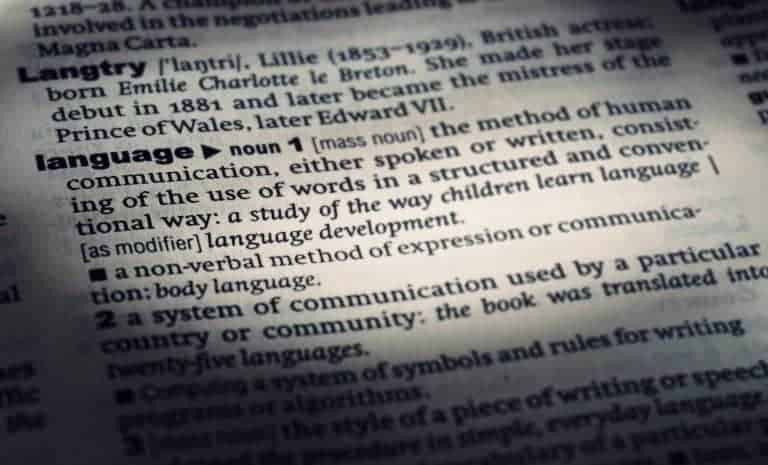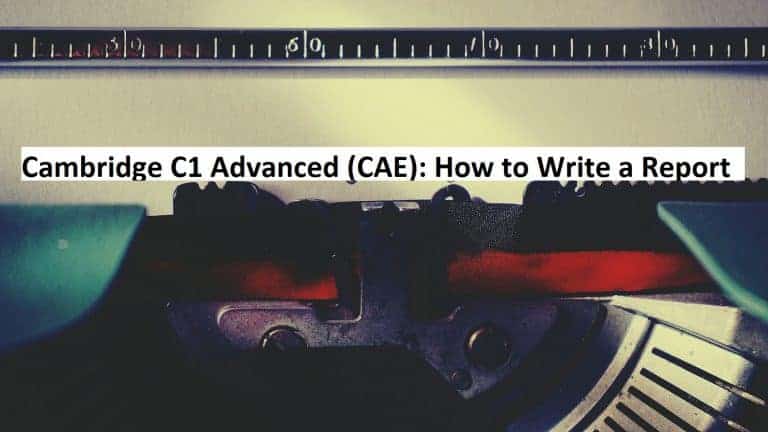How to calculate your score in C1 Advanced
In this article I’m going to explain to you in detail how you can find out what the two different scores in the CAE exam are, why there are two of them, how the Cambridge English Scale works as well as what all of that means for the various parts of the test.
With this information you should be able to understand the whole marking system in CAE a little bit better instead of looking at your score without knowing what it means.
Why are there two different scores?
When Cambridge English introduced their scoring scale, many people got confused because there were suddenly two numbers to wrap your head around and no one was really sure about what exactly all of this was about. While there had been a simple pass-or-fail system in place for many years, all of a sudden candidates would receive this random-looking score on their certificate.
Now that you are in complete panic mode, let me assure you that it’s not as complicated as it might sound. In fact, the two systems do make a lot of sense and can help you understand your result even better than before.
If you finish this article and you still feel like it goes a little bit over your head, don’t worry and simply stick with the rule of thumb that 60% correct answers still get you over the finish line. However, if you want to find out more about the Cambridge English Scale and how everything works, take the red pill and let’s get started.

What is the Cambridge English Scale?
In 2015 Cambridge English introduced their new scoring system and since then they have used it to report their exam results to candidates around the world.
In your exam you still get marks, which you could consider to be one score, but your final results are reported to you as a score on the Cambridge English Scale. That’s why there are now two scores that might confuse some people.
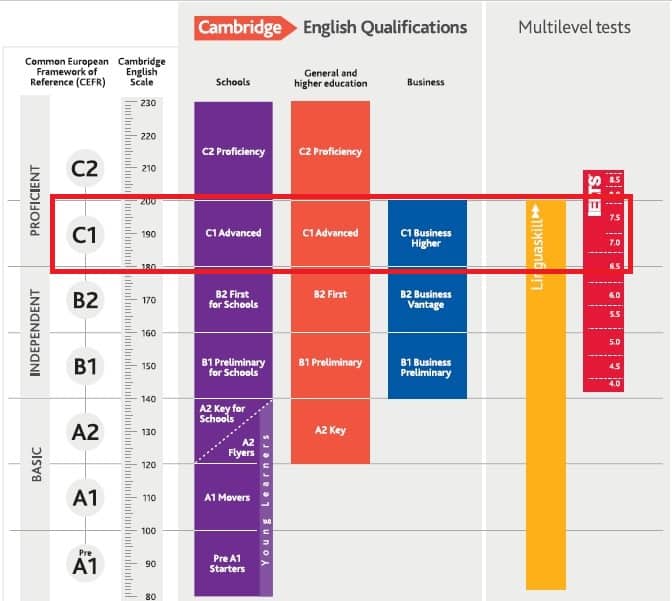
Above you can see an image of the Cambridge English Scale. I’ve highlighted the C1 range for you so you can see where Advanced falls compared to other levels and exams like IELTS or Linguaskill. You pass the test if you reach a score of 180 or higher.
What is probably more important is that all the exams follow a clear progression in terms of the score someone gets on the scale. It is now a lot easier to see what it means to pass, for example, B1 Preliminary compared to C1 Advanced. All the exams have a little bit of an overlap as well, i.e. you can score more than 200 in C1 Advanced and your certificate acknowledges this by giving you C2 level just as if you had passed CPE.
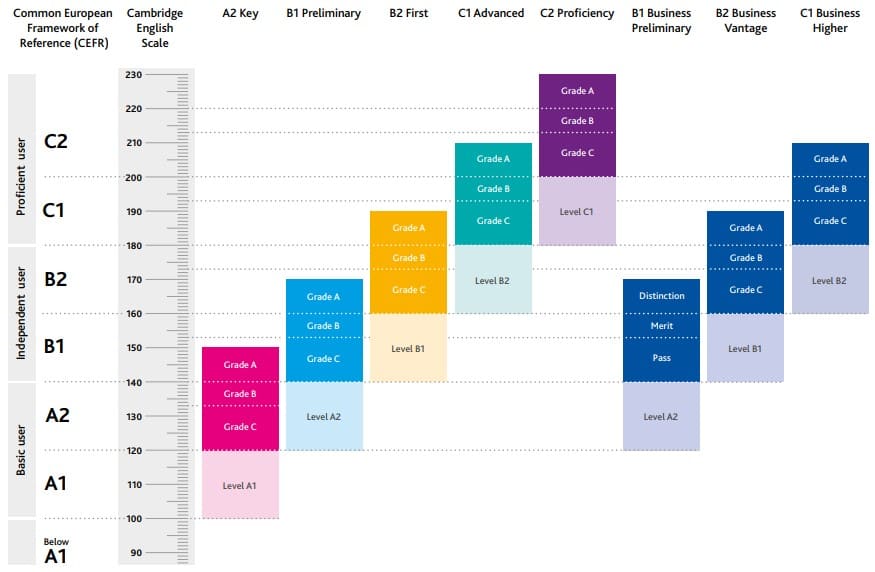
Apart from that, Cambridge English offers a handy tool to do the calculation for you if you want to know what your score would be in IELTS or other exams.
Get Your Free C1 Advanced Writing Cheat Sheet Now!
Just leave your name and email address below.
The five different parts of C1 Advanced
A few weeks after you’ve taken the exam you receive your certificate which shows your overall score as well as the results in the separate papers.
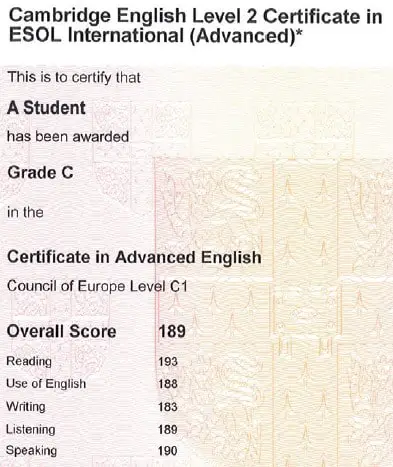
In this example the student scored over 180 in each paper and has an overall score of 189.
The biggest issue is to know how these scores are calculated, but I’m going to give you all the information you need. Please note that you need to know how many marks you’ve got in the different papers, which is impossible to know when you take the official exam, but when you practise, you can check back here and see what your marks mean.
Also, you can use the method I’m going to describe backwards as well so you can estimate how many marks you got by looking at your Scale score.
Reading
In Cambridge C1 Advanced you do Reading and Use of English in one combined paper, but they are marked separately, so in order to calculate your score you need to know which parts belong to Reading and which ones are in Use of English.
- Reading makes up 20% of you overall result.
- The paper has eight parts, but only Part 1, 5, 6, 7 and 8 count towards Reading.
- For Parts 1 and 8 each correct answer is worth 1 mark while Parts 5, 6 and 7 get you 2 marks.
- There is a total of 50 marks in this part.
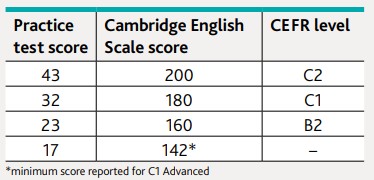
In the picture above you can see how to convert the number of marks to a score on the Cambridge English Scale as well as the CEFR level. To pass CAE you need to get into the C1 range or higher (32 marks or 180 minimum). If you fall below 32 marks, your score is still reported, but it is only level B2. Everything from 43 marks upwards falls into the C2 (Proficiency) tier.
Use of English
As Parts 1 and 5-8 count towards the Reading portion of the paper, only Parts 2, 3 and 4 give you marks for Use of English.
- Use of English makes up 20% of your overall result.
- Parts 2, 3 and 4 of the exam paper count towards Use of English.
- Each correct answer in Parts 2 and 3 is worth 1 mark while you can get up to 2 marks in Part 4.
- You can score a maximum of 28 marks in this paper.
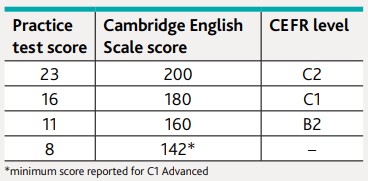
Listening
In the Listening paper there is nothing to break up or too much to worry about in terms of calculations. Everything gets straight to the point.
- Listening counts 20% towards your overall result.
- Every part of the Listening paper counts.
- You get 1 mark for each correct answer.
- There are 30 marks in total.
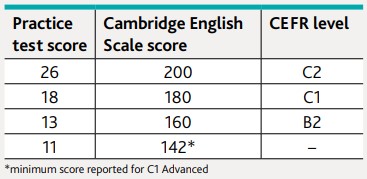
Writing
Writing is a little bit more complex than the previous three papers. The reason for this is that you have to write two texts which are marked individually, but then you add them together to get you score. Secondly, there are four different marking criteria so you need to combine eight marks to get your score.
- Writing counts 20% towards your overall result.
- The two texts count the same towards your score.
- You can get up to 5 marks in each of the following criteria:
- Content
- Communicative Achievement
- Organisation
- Language
- With four categories and two texts there is a total of 40 possible marks in your Writing test.
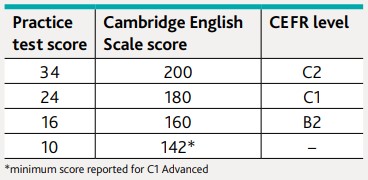
Speaking
The Speaking paper is even more complex than Writing. We have six marking criteria in Speaking, but they are not weighted equally.
- Speaking counts 20% towards your overall result.
- The different marking criteria count differently towards your Speaking score.
- You can get up to 5 marks in each of the following criteria:
- Grammatical Resource (multiplied by 2, so 10 possible marks)
- Lexical Resource (multiplied by 2, so 10 possible marks)
- Discourse Management (multiplied by 2, so 10 possible marks)
- Pronunciation (multiplied by 2, so 10 possible marks)
- Interactive Communication (multiplied by 2, so 10 possible marks)
- Global Achievement (multiplied by 5, so 25 possible marks)
- There is a total of 75 possible marks in this paper.
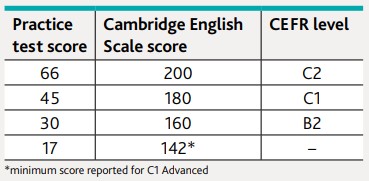
Can you fail the exam?
Officially there is no pass or fail in Cambridge English exams any more since the Scale was introduced. However, if you take the C1 Advanced test and your overall result is below 180, you won’t get a certificate that says that your level is C1, but B2, which you could consider as ‘failing’.
So, even though there is no official ‘fail’ grade, you still need to reach an overall result of at least 180 in order to ‘pass’ the exam.
Additional information
If you are interested in more information about the Cambridge English Scale, you can have a look at the video below and if you want more information about C1 Advanced, then check out my article about everything you need to know about the CAE exam.
I hope this article helps you understand how the Cambridge English Scale works and how to calculate your score in C1 Advanced.
Lots of love,
Teacher Phill 🙂

